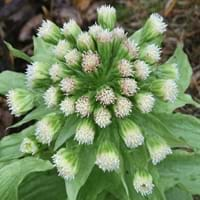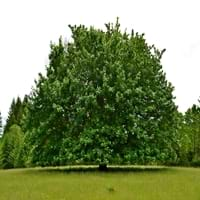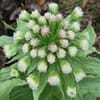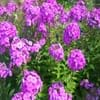Life Span
Perennial
Perennial
Origin
China, Japan, Korea
Western United States, Northwestern United States, California, Canada
Types
Not Available
Black Maple, Mountain Maple,
Norway Maple
Habitat
Wet lands
Riverbanks, Stream side
USDA Hardiness Zone
5-9
5-9
Sunset Zone
2a, 2b, 3a, 3b, 4, 5, 6, 7, 8, 9, 10, 14, 15, 16, 17, 18, 19, 20, 21, 22, 23, 24
4, 5, 6, 7, 8, 9, 10, 11, 12, 13, 14, 15, 16, 17
Habit
Clump-Forming
Oval or Rounded
Flower Color
Light Yellow, Ivory
Yellow, Red, Green
Flower Color Modifier
Bicolor
Bicolor
Fruit Color
Not Available
Yellow, Red, Green, Sandy Brown
Leaf Color in Spring
Green, Purple, Burgundy
Light Green, Yellow green
Leaf Color in Summer
Green, Purple
Green
Leaf Color in Fall
Green, Purple
Gold
Leaf Color in Winter
Not Available
Not Available
Leaf Shape
Round
Irregular
Plant Season
Spring, Summer, Fall
Spring, Summer, Fall
Sunlight
Partial shade, Full Shade
Partial Sun, Partial shade
Type of Soil
Clay, Loam, Sand
Clay, Loam, Sand
The pH of Soil
Acidic, Neutral, Alkaline
Acidic, Neutral, Alkaline
Soil Drainage
Poorly Drained
Average
Bloom Time
Early Spring, Late Winter
Early Spring, Spring
Tolerances
Wet Site
Not Available
Where to Plant?
Ground
Ground
How to Plant?
By dividing rhizomes, tubers
Seedlings
Plant Maintenance
Medium
Medium
Watering Requirements
Requires consistently moist soil
Do not let dry out between waterings, Keep ground moist, Requires regular watering
In Summer
Lots of watering
Lots of watering
In Spring
Moderate
Moderate
In Winter
Average Water
Average Water
Soil pH
Acidic, Neutral, Alkaline
Acidic, Neutral, Alkaline
Soil Type
Clay, Loam, Sand
Clay, Loam, Sand
Soil Drainage Capacity
Poorly Drained
Average
Sun Exposure
Partial shade, Full Shade
Partial Sun, Partial shade
Pruning
Remove damaged leaves, Remove dead branches, Remove dead leaves
Remove branches, Remove damaged leaves, Remove dead branches, Remove dead leaves, Remove dead or diseased plant parts
Fertilizers
All-Purpose Liquid Fertilizer
All-Purpose Liquid Fertilizer, Nitrogen
Pests and Diseases
Red blotch
Red blotch
Plant Tolerance
Drought
Not Available
Flower Petal Number
Not Available
Single
Foliage Texture
Bold
Coarse
Foliage Sheen
Glossy
Matte
Invasive
Sometimes
Sometimes
Attracts
Not Available
Bees, Birds, Flying insects, Insects
Allergy
Not Available
Pollen
Aesthetic Uses
Ground Cover
Not Used For Aesthetic Purpose
Beauty Benefits
Not Available
Improve hair condition
Environmental Uses
Air purification
Air purification, Nesting sites for birds, Shadow Tree, Wildlife
Medicinal Uses
Asthma, Chronic fatigue
Tonic, tuberculosis
Part of Plant Used
Leaves, Seeds, Stem
Flowers, Sap, Tree trunks
Other Uses
Used as Ornamental plant
Application in Furniture, Basketary, Can be made into a herbal tea, Decorative veneers, flooring, paneling, Edible syrup, Fibre, Making piano frames, Used as firewood, Used as fuel, Used in salads
Used As Indoor Plant
Sometimes
No
Used As Outdoor Plant
Yes
Yes
Garden Design
Bog Garden, Container, Water Gardens
Feature Plant, Shade Trees
Botanical Name
PETASITES japonicus 'Purpureus'
ACER macrophyllum
Common Name
Giant Butterbur, Japanese Butterbur, Purple Butterbur
Big-leaf Maple, Oregon Maple, Pacific Maple
In Hindi
Purple Butterbur
बड़ा पत्ता मेपल के पेड़
In German
Lila Pestwurz
Big Blatt Ahornbaum
In French
Violet Butterbur
Grande feuille Érable
In Spanish
púrpura petasita
Gran hoja del árbol de arce
In Greek
Purple Butterbur
δέντρο Maple μεγάλο φύλλο
In Portuguese
roxo Carrapicho
Árvore de bordo Folha grande
In Polish
Purpurowy Lepiężnik
Duży liść klonowy
In Latin
Purple Butterbur
Big Maple folia ligni
Phylum
Magnoliophyta
Magnoliophyta
Class
Magnoliopsida
Magnoliopsida
Order
Asterales
Sapindales
Family
Asteraceae
Aceraceae
Clade
Angiosperms, Asterids, Eudicots
Angiosperms, Eudicots, Rosids
Tribe
Senecioneae
Not Available
Subfamily
Not Available
Not Available
Number of Species
Not Available
Importance of Purple Butterbur and Big leaf Maple
Want to have the most appropriate plant for your garden? You might want to know the importance of Purple Butterbur and Big leaf Maple. Basically, these two plants vary in many aspects. Compare Purple Butterbur and Big leaf Maple as they differ in many characteristics such as their life, care, benefits, facts, etc. Every gardener must at least have the slightest clue about the plants he wants to plant in his garden. Compare their benefits, which differ in many ways like facts and uses. The medicinal use of Purple Butterbur is Asthma and Chronic fatigue whereas of Big leaf Maple is Tonic and tuberculosis. Purple Butterbur has beauty benefits as follows: Not Available while Big leaf Maple has beauty benefits as follows: Not Available.
Compare Facts of Purple Butterbur vs Big leaf Maple
How to choose the best garden plant for your garden depending upon its facts? Here garden plant comparison will help you to solve this query. Compare the facts of Purple Butterbur vs Big leaf Maple and know which one to choose. As garden plants have benefits and other uses, allergy is also a major drawback of plants for some people. Allergic reactions of Purple Butterbur are Not Available whereas of Big leaf Maple have Pollen respectively. Having a fruit bearing plant in your garden can be a plus point of your garden. Purple Butterbur has no showy fruits and Big leaf Maple has no showy fruits. Also Purple Butterbur is not flowering and Big leaf Maple is flowering. You can compare Purple Butterbur and Big leaf Maple facts and facts of other plants too.





